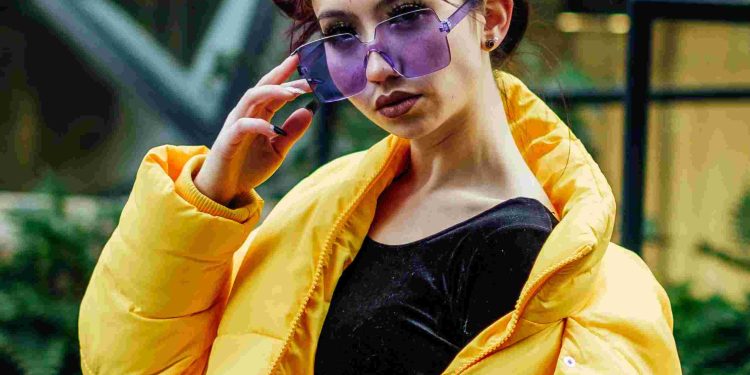Street Nonconform Fashion Movement
What does it mean to dress rebelliously in a world that tries to package individuality into algorithms?
Street fashion, once a raw, grassroots movement driven by authenticity, has transformed into something that challenges traditional societal norms yet still strives to maintain its edge in a homogenized culture.

The Evolution of Street as Philosophy
Growing up in a suburban area, my first encounter with street fashion felt like discovering a hidden world. It wasn’t just, “These are the clothes I wear.” It was, “This is who I am.” Oversized graphic tees, patched-up jeans, and sneakers that had seen miles told stories of rebellion, belonging, and individuality. Streetwear became a canvas for ideas, daring society to categorize something that thrived in its refusal to fit into predefined boxes.
Yet, this movement is not as simple as baggy hoodies and sneakers. It’s a response to deeper societal forces. As individuals struggle with identity in an age of surveillance capitalism, street fashion becomes a way to scream, “I am still different,” against the backdrop of a digital world trying to predict your every move.
Challenging the Norms
Consider this: Traditional elegance places rules on how we present ourselves. Formal fashion—defined by starched collars, strict tailoring, and understated palettes—favors conformity, submitting to outdated ideals of what is “professional” or “appropriate.” Streetwear directly counters this, offering loose flows, clashing colors, and bold statements of self-expression.
Philosopher Gilles Deleuze once emphasized the need to “escape identity through creative invention.” Isn’t that what street style represents? It questions the wisdom of rigid social hierarchies and outdated perceptions of success tied to appearances. Why wear a tie when a hoodie declares purpose just as loudly?
Streetwear reminds us that style is a dialogue. People craft their looks by fusing genres, drawing from subcultures, and blending traditions. It’s an ever-evolving experiment that doesn’t ask for permission.
The Psychology Behind It
Psychologically, street fashion reflects a rebellion against the rigidity of social structures. It leverages the principles of individuation as discussed in Carl Jung’s archetypes, nudging wearers to define themselves outside imposed roles. A patched-up jacket isn’t just apparel—it’s armor against monoculture and a banner of personal stories.
Additionally, neuroscientific studies have highlighted the dopamine-driven pleasure of uniqueness. When individuals wear something that defies societal standards, it activates reward pathways, reinforcing behavior. Essentially, street fashion isn’t just cool—it rewires your brain to crave authenticity.
The Role of Technology in Shaping the Future
Where does street fashion go next? Technology is redefining its boundaries. Augmented reality (AR) clothing, NFTs as wearable art, and digital-only apparel are bridging gaps between creativity and digitization. The metaverse promises to provide an unlimited playground for the movement.
However, this leads to an interesting conundrum: If everyone wears the same AR “holo-hoodie” downloaded from an online store, can street fashion retain its subversive roots? Brands and creators must strike a balance between embracing future-tech while maintaining the authenticity and rawness that define the movement’s ethos.
Practical Steps to Embrace this Movement
-
Start thrifting:
The roots of streetwear are in creativity and upcycling. Visit vintage stores or craft your own designs by altering existing clothing. -
Understand subcultures:
Dive into the music, art, and societal issues tied to street fashion. Whether it’s punk, hip-hop, or skate culture, these define the movement’s heart. -
Fuse genres:
Challenge conventions by blending formal wear with street apparel—like pairing a blazer with graffiti-inspired sneakers. -
Speak your truth:
Use your clothing choices to tell your story. Empower yourself with outfits that resonate with your past, values, and aspirations.
The Lesson for Lifelong Learning
Street fashion teaches an essential life lesson: never stop evolving. In the same way trends shift and adapt, we, too, must embrace continuous self-research and education. Try new skills, fail spectacularly, learn again, and move. Just as streetwear refuses to settle, so should you.
Think of your life as a figurative outfit—a mix of textures, patches of experiences, and bold colors of ambition. Layer your knowledge unapologetically, break societal rules, and refuse to conform.
A Circular Movement
In street fashion, authenticity reigns supreme. The movement began with grassroots rebellion, whispered desires for individuality, and loud proclamations of freedom. Through time, it expanded to challenge norms not just of fashion but of societal structure itself.
As we wear our choices—be they literal or metaphorical—let’s not forget the core principle of street style: Resistance is beauty, and reinvention is life. In the winding alley of individuality, keep walking boldly.










